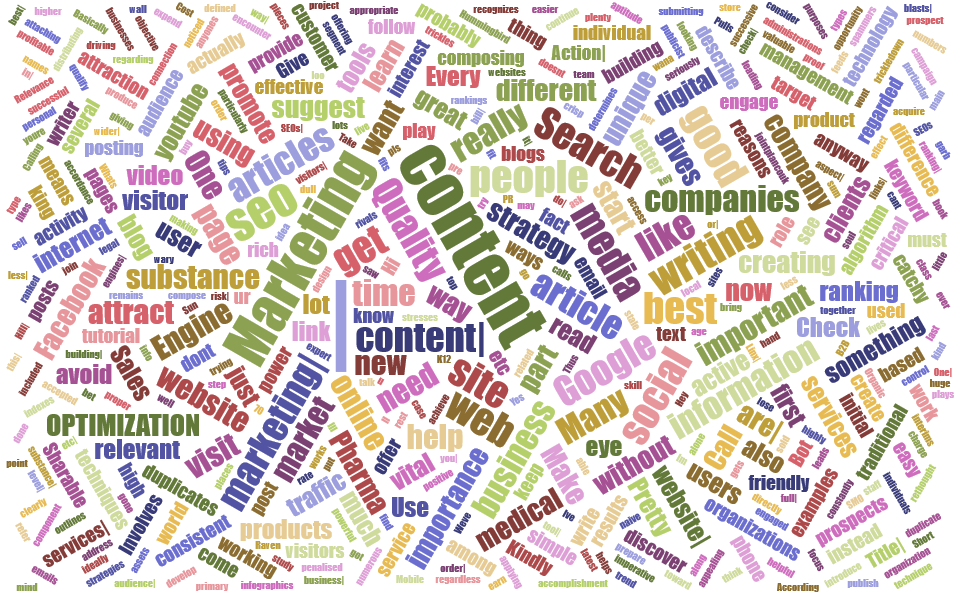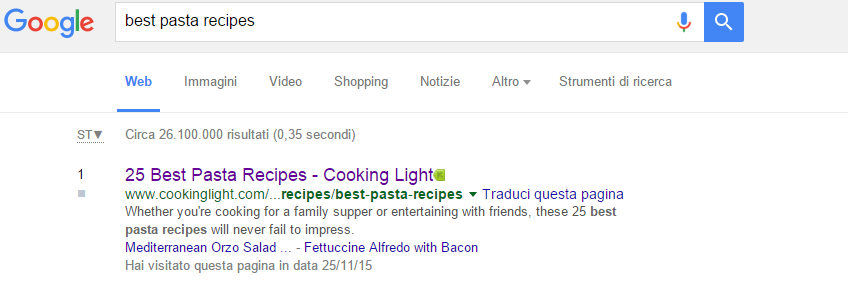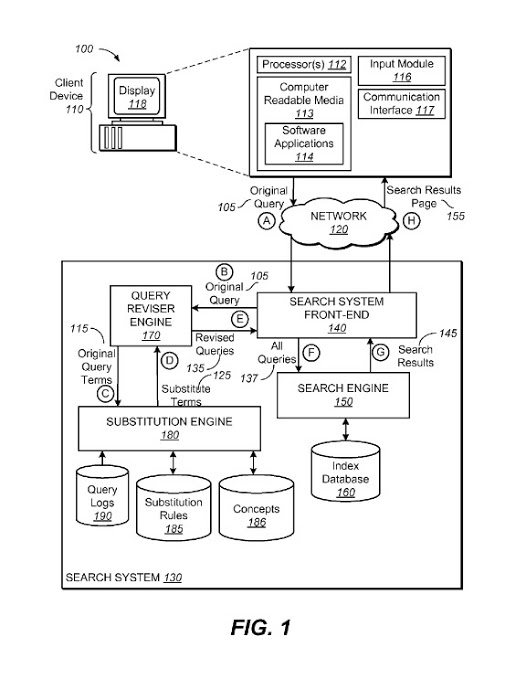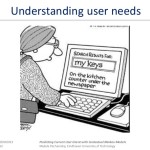Semantic Intent: The meaning behind a user query
User Intent: Get to Know Your Target
While SEO’s and content marketers try to produce the best content ever to rank on search engines, they do not actually always focus on the user’s intent. Basically, they don’t focus on their target.
When I did my Master in Marketing, one of the things I learnd and found most useful throughout my whole career, was to focus on the target. Focusing on the target of your marketing activity, will ensure that you deliver the right message to the right people, and at the right moment.
Target analysis is one of the most important things a marketer should do, and surely one of the first things to do, if not the first, before starting any marketing campaign. But even if target is one of the most important factors that drive success to a marketing campaign, it is often ignored or underestimated.

The importance of “target knowledge” resides where the core of the business is, because the target is the user that will bring money to the company, and a return on the investments made.
If you don’t know your target well, the risk is that you will miss opportunities, by providing content that is not useful or it is delivered to people who’s not actually interested in it.
This applies to all areas of marketing, and in particular web marketing, because customers on the web are quickest than everywhere else, and you can lose their attention within 1 second, if the message and content you’re delivering is not the appropriate one.
This is why, in web marketing (CPC, SEO, Search Marketing, etc) more than everywhere else, it is important to focus on your target, understand it’s needs, and be able to satisfy those needs within your webpages and your brand experience.
Focusing on your target will let you better understand who your user is, and it will let you centralize all of your marketing efforts towards a common goal: to please your target, and drive them gently to get your ROI, and your salary.
And, as marketing is not just made of “content”, as well as content is not just made of “text” (but all richer media available), all that here relates to content marketing target, it does apply as well to all marketing channels and strategies (at least to all where the target of the message is the same).
There is a rule that I found to be true and useful in many of my activities:
Knowing your target is a key to your success.
This is why, even before doing keyword research, it is important to figure out who the target of the message is, and what is its needs. Only in this way you can be sure to capture your target’s attention, by delivering the right message to the right people.
But doing target research is even harder then doing semantic search. Because this includes knowing well not only your target (that you can learn about by visiting forums, social networks, comments on websites and many other places), but also knowing well the content you’re going to write about, knowing the topic of your content and as many lateral aspects related to your content.
“In this amazingly complex world, we need schemes in order to understand the whole.”

The best pasta recipe according to Google
Now in a previous article comment Simone asked:
“What I still do not understand is google’s way of linking the “user need” and the “article context”.
if i’m searching for new recipes with pasta, i will probably search for something like “great pasta recipes”. what are those words that help google decide what’s really “great” among a thousand pasta recipes ?”
I think what search engine tries to do is to “understand the user” and user intent (through browsing history, pogo sticking and other signals), and to “understand the content” and context of the pages indexed. But that’s not the full story.
The reason why the first ranking pages for “Best pasta recipes” (as well as many other “best” “cheapest”and other generic queries) are often articles which contains “the best 25 recipes”, “the top 10 things”, “the 20 things you must know” or category pages. is simply because search engine guess what the user intent would be, and for so generic queries, the search engine will find it easier to get the best match for that generic user’s intent by giving lists of things which most likely will satisfy user’s needs.

What said before is how search engine can link user need’s (from the search engine understanding of it) with context and content of the page it’s going to show to the user. Then, in the example, if a user is asking for the best pasta recipe, Google will try to guess what the user wants with that query. Then it would be easier to find a match by giving lists of pasta recipes, or blog categories about pasta recipes, that the user can navigate, and that as well will contain many keywords of the same one topic, pasta recipes.
The best words to describe pasta recipes, are related to what Google understands of pasta and recipes. Of course it can’t eat, but what it can do is to find occurrences of the words Google knows about this topic(s). Then it’s just some math to calculate which words occurr more frequently, and which should occurr then more frequently in a “perfect” recipe (or recipe list).
And, importantly, those occurrences are not only found whithin the page, but also within the whole site and site architecture. SEO’s know well this point.
Google understanding of a user’s intent
Now the more generic question that rise from this point is:
How does Google understand user’s intent for one or more particular queries?
Well, the answer is pretty easy.
Through words.
In fact, what Google does is “translating words into numbers“, especially 0’s and 1’s, and in this way, through complex algorithms, it tries to determine what the intent of the user was when he or she asked a particular “question” to the search engine’s search box.
With it’s latest algorithm implementations, such as AI (artificial intelligence) and machine learning (see August 2015 Google Patent for understanding RankBrain), what Google is trying to do is better understand user’s intent, even for queries never entered before.

See for example what Google is doing here: it is understanding what the user mean (wants) with it’s query (in this case, it is pretty simple), then it extract the content that better answers the user query (intent).
In this example, the question / need of the user was pretty simple to understand, even for a machine. But it is not alwasy the same.
In fact, each one of us reasons in different ways, and talks in a different way.
We’re all the same, in a certain way, but at the same time, we’re all different. Each one of us have a different tone of voice, a different way to talk and express concepts, different ways to ask questions and to provide answers.
But, most of the time, as we’re also all the same, our intent, for many of our questions, it’s similar, even thou expressed in different ways.
There are hundreds of ways to express the same concept, in a same language. So for example if in English I need to ask where the train station is, I can use as many sentences as I want.
I could ask for:
- station address
- station location
- train station
- main station
- central station
- city train station
- closest train station
And so on. My intent will anyway be always the same: “I need to locate a train station”.
This beautiful world of language is infinite, and it has as many infinite combinations to express concepts as it has music to express itself. Babilon tower felt down, and we all mixed up things.
Who made us made it is so perfectly complicated that we should not try to reach this complexity. But that’s actually what Google is trying to do (in a futuristic vision of it).
Now, this doesn’t go only for English language. Imagine other, more comples languages. The chances people will use the same identical question to express tje same intent are not so many.
Here’s where Google algorithms come into account. What google is looking for is codifying words to extract meaning from them. To extract the meaning from the user’s query with machines.
Now to reach this goal they need to simplify queries and language. But at the same time they need clusters. They need clues. In each document google examine, it needs to find proof that the document can answer the user’s question as best as possible.
As well, it needs to simplify the user query, to get the best meaning from it. Trying to shorten long tail queries into more generic patterns.
What does it mean for website owners, journalists and copywriters? That they may actually be able to rank in Google’s top 10 only by using the right terms within their content.
They need to satisfy a user’s latent (unexpressed) need.
Now, as for the train station example, I may have no clear way to express my question. So for example I may write “pizza” because I need to find information about pizza’s history.
How does google understand what I mean? Of course, it will not, unless I refine my query, for example with “pizza’s history”. I can even get deeper into my search, or just let Google choose for me.
Well, here comes into play a semantic tool. How google will rank my site about egyptian pizza’s history more than another website?
By scanning my page looking for relevant terms that may be a proof for Google that my content is much about “egyptian pizza in history” and then rank me before other sites once Google has understood the user query and intent with it’s query.
Once Google finds matches with the user’s intent (to find history of pizza and egyptian culture) and my content words, it may then rank my site higher than others. Now that the importance of user’s need is clear, the question is how to find and intercept those intents, which tools can help us do so, and if we can automate those user’s intent interception to make things easier.
That’s it for today’s post. Hope it was of interest.
Thanks for reading. You can share your thoughts from the comment section below. Or try Keys4Up.
Ultimi post di Eugenio Tommasi (vedi tutti)
- Top 5 Content Marketing Tools to Boost Content and Traffic - 7 Aprile 2021
- The best keyword Tools (free and paid) - 9 Novembre 2020
- Semantic Keyword Research: what is and how to use it for SEO (in 2020) - 22 Ottobre 2020
 Next Post
Next Post